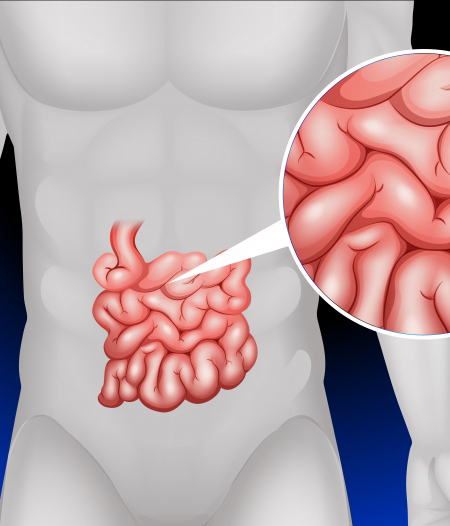Journey Through The GI Tract PART 4: The Small Intestine And Its Function

As part of the ‘My GI Tract’ series, our journey through the GI tract continues with the small intestine. Let’s learn how this part of aids our digestion.
Let’s do a very quick recap. The digestive process begins in the mouth. It receives the food and breaks it up into small, easy-to-swallow pieces. Enzymes from the saliva break down any starch and the food passes into a long tube called the oesophagus. It carries the food bolus along its length, and contracts (peristalsis) to move food down towards the stomach. The enzymes and acids in the stomach continue the process of breaking down food, before they are released into the small intestine.
Did you know?
Did you know that the small intestine (the longest part of the digestive tract) is a long muscular tube and is on average roughly 7 metres long – about 3 times the length of your body?!
Your small intestine
The small intestine runs from your stomach to your large intestine and plays the most significant role in the digestive process. Its purpose is to break down food using enzymes released by the pancreas and bile from the liver. Peristalsis also works in this organ, moving food through and mixing it with digestive juices from the pancreas and liver.
It is made up of three different parts – the duodenum (where the further breakdown of the food takes place), and the jejunum and ileum (these two are mainly responsible for the absorption of nutrients into the bloodstream). Part of the small intestine is covered with tiny, finger-like tentacles called villi. The purpose of these villi is to increase the surface area of the small intestine, for maximum nutrient absorption.
A concoction of digestive juices and enzymes are at play
As chime (a semi-fluid paste) enters the small intestines, it mixes with water, bile, pancreatic digestive juices, enzymes and mucus. These contribute to its change in consistency – into more of a liquid form. Bile is critical in the digestion of fats into free fatty acids, and is composed of water, salts, acids, and liquids. It is a medium in which fats and fat-soluble vitamins can dissolve and be carried into the blood stream via the villi.
What remains of the food when it reaches the end of the ileum is a combination of water, electrolytes — such as sodium and chloride — and waste products (plant fibre) and dead cells shed from the lining of your digestive tract into the large intestine (colon).
Tune in next time, as we explore what happens at the next phase of digestion — inside the pancreas.
To find out about how to keep your digestive system working effectively, and to book your appointment, get in touch with us now.
